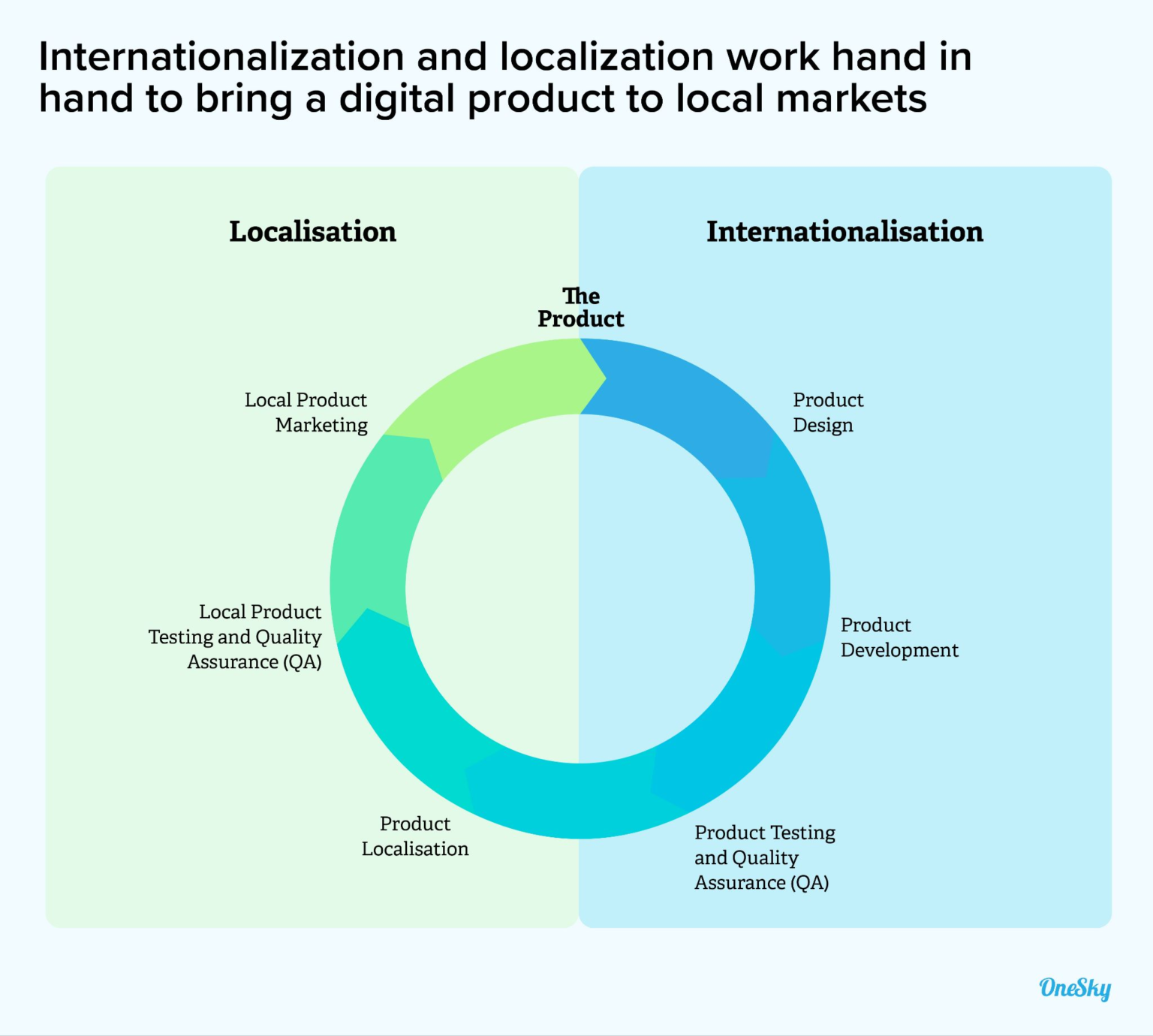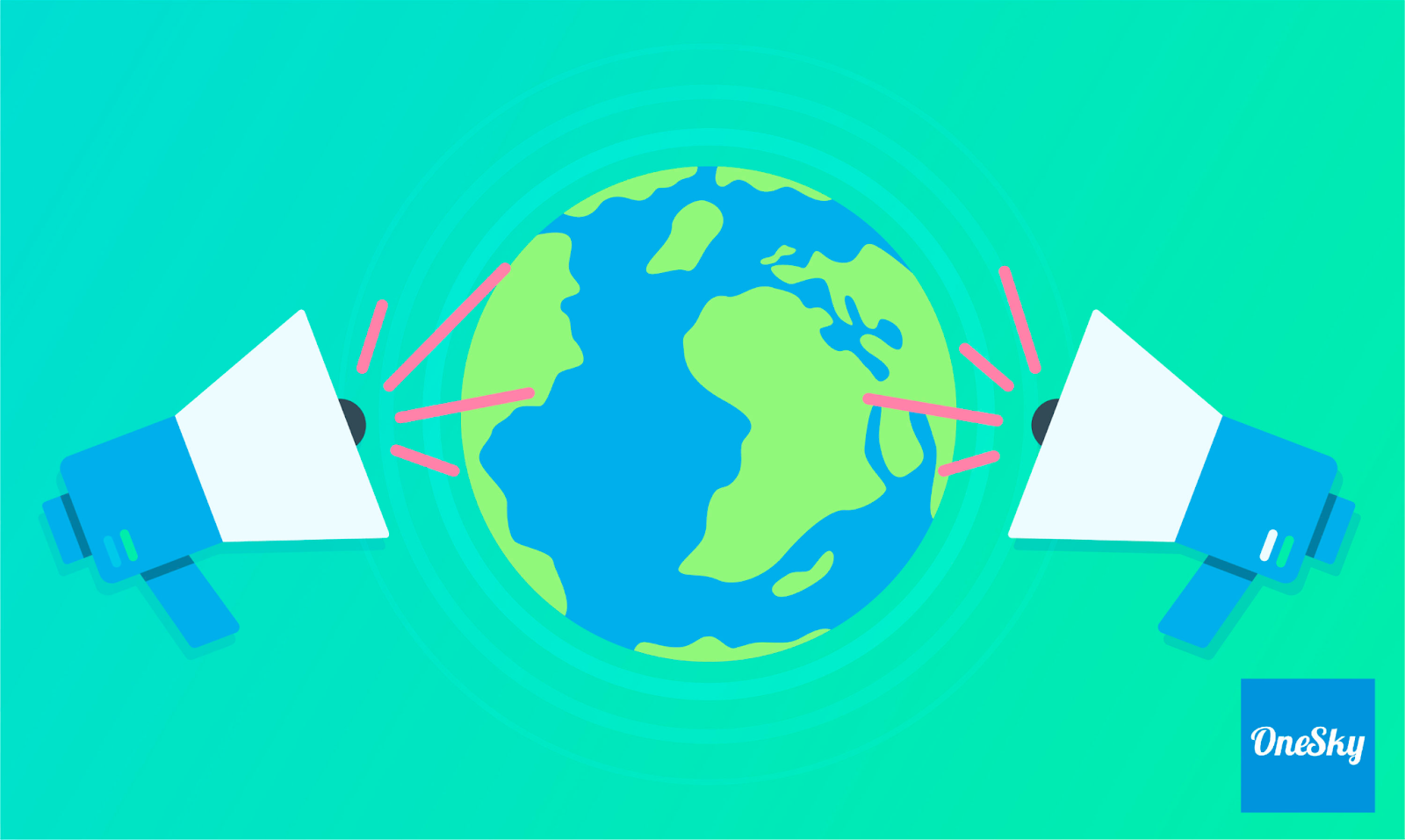Internationalization and Localization: Choosing the Best Solution for Your Business
What is Internationalization?
Internationalization can be compared to the wheels that make the concept of globalization “move” along the road to expansion—keeping all services and products aligned with the end goal of mass distribution and use.
From software setup to hardware elements, the utility of internationalization as a concept lies in its adaptable and flexible nature; internationalization keeps critical business frameworks accessible and relevant to your international audience.
This can look like preparing your current offerings for any legal requirements to suit a wider range of international target markets, or using Unicode standard in your software development and source code to automatically support new multilingual setups in a user’s native language.
You may also choose to implement ASCII across your mobile apps, products and services to properly display any symbols or digits that are relevant to your end-users, which can also be helpful for number formats and other elements needed for currencies and dates.
Internationalization also includes the process of making a more evergreen source code that you can build on as you expand to new languages and internationalized products. Building for the future, even in the startup or “beginner” phases of business can support your overall longevity and success in your respective industry.
You’ll be supporting the creation of your flexible framework while removing possible barriers to internationalization, ultimately helping you to reach sustainable and replicable success while getting you a faster return on investment.
(Who doesn’t like that?)
What is Localization?
Localization captures similar end goals and elements of internationalization but on a more micro-oriented scale, focusing on tailoring your brand experience to the millions of local markets around the world. It can extend to regionally-specific formats, translation into different languages beyond English, and personalization to the preferences of customers in different countries.
Good examples of localizable content would include locale-specific components, such as the capability to read left to right (as the Japanese and English language use) or right to left, allowing a more inclusive experience for those in Arabic-speaking countries. It can also look like automatically displayed international currencies by region, available international number formats and common date formats that appear upon the launch of your product or service.
This step is critical to establishing and promoting your brand awareness and experiences to global audiences. In this way, localization has a major impact on your bottom line, offering you the potential to extend your average client lifespan. If used properly, you won’t have to drastically overhaul your source code by region. Rather, you’ll be able to build on top of it, using concepts from software localization to personalize the experience without taking a hard hit on your resources.
The focus on a quality localization strategy has grown so much over recent years to comply with international markets and preferences that the Content Marketing Institute has predicted that there will be a major push for automated localized processes to help businesses scale quickly and competently. We may also end up seeing a major flood of investment in the field of localization in 2023 and beyond.
In this article, we’re digging into fundamental differences between localization vs. internationalization, as well as exploring the role of translation in your global expansion strategy.
Key Differences Between Localization vs. Internationalization
Understanding the fundamental differences between localization vs. internationalization helps you to amplify your growth and enhance the experience for both team members and clientele. After all—there are different development processes and localization processes for each, which can impact the overall product deliverables for end-users.
Internationalization, while a broader set of focuses, allows you to address needs that lie in the core framework of your business, such as data encoding, hardware, and the overall user interface of your tool. While user experience (UX) elements may change during the process of localization, these parts of your infrastructure will generally remain static and act as a skeleton of success for localization-oriented tasks and updates.
After this set of tasks is done, developers and strategists can then move on to the key task of adapting and personalizing the UX by region and local preference through a localization process—prioritizing the most user-dense populations first for maximum impact.
This generally goes beyond simply translating your content and is generally the most successful with a complete local overhaul to encourage a more personal feel across your content. It also may encompass higher level tasks, such as auditing character encoding, currencies and date format. This ensures that they are as correct and inclusive as possible for a specific region within the framework set by your internationalization process.

Translation vs. Localization
While translation is an important part of localization, it’s one of many cogs that allows you to expand quickly globally.

Translation is the direct textual conversion from one language to another by region, taking into account critical elements (such as regional dialect, slang, and varying tonality by language). With this tool, you’ll be able to fully immerse your audience in the possible transformation your business has to offer. Localization, however, uses translation to establish a brand’s presence in a specific culture or region, personalizing the experience for users and prospects.
This can take place in many different formats, such as abbreviation and slang insertion for better understanding across different cultures. It can support easy localization while fueling the process of broader-scale internationalization processes, enhancing your bottom line and connecting more end-users to conversions.
While translation delivers the message in correct language and dialect, localization gives the message true impact and resonation—using relevant local focuses, examples, and tools to continue to build brand advocates and long-term users.
Which Should You Choose?
In an ideal situation, you may not have to choose between internationalization vs. localization. Both are critical to establishing and promoting your brand to your global audiences, giving you the relevancy you need for sustainable, long-term stability and profit.
However, if your business is in a place where a choice must be made to properly allocate priority and resources over the course of your expansion, many experts agree that internationalization should be a top priority.
Prioritizing internationalization can boost your efforts in localization and translation, giving you the infrastructure you need to maintain your momentum moving forward. You can then use internationalization to prepare your team and project management process for the next steps, adopting a nuanced and tested strategy for your localization and translation efforts—giving your customer a personalized taste of what your business has to offer.
Additionally, internationalization can give you access to some of the highest-tier talent available in the global market, which can help you to enhance your localization efforts. These team members may have been won by previous regional localization efforts as clients, but will want to stay due to your globalization and internationalization efforts and process refinement. This can continue to have a ripple-effect impact on your success and future growth.
You may also find that your brand awareness may rise as you continue to enter new markets, impacted entirely by the quality of both key elements of localization vs. internationalization. While marketing is an expected expense, your growing base of clients can provide a powerful word of mouth testimony to what your product or service can do—boosting any impact that paid marketing initiatives could give you.
Ultimately, translation can be used to bring localization efforts together, offering individuals the chance to intentionally and intimately connect with your brand through one of the most personal and tangible mediums: language.
This not only informs them of your brand’s capability in their own native language, but it offers them the opportunity to engage with your brand in a deeper way, which can add another dimension to the purchase experience and form a foundation of trust and choice down the line.
After you establish the framework and nuance through internationalization, localization, and translation, you can dive into ongoing management and refreshment; working on updates or employing integrations and tools to enhance both simultaneously.
Choose the Right TMS for Internationalization and Localization with OneSky
If you’re looking to go global, focusing on internationalization and localization is a great place to start. You’ll get the infrastructure and marketing power you’ll need to make a lasting impact on your customers, establishing your business as a long-term global expert. Choosing the right tools and software options to support you in this process is critical for your long-term success and system refinement as your company continues to expand.
OneSky is the tool of choice for your translation management needs. Our goal is to streamline the process of your international expansion, offering you the localization and translation support you need to remain effective and collaborative through every stage and step.
OneSky offers translation and review services and on-device testing, housed in a sleek cloud-based TMS that helps you to reduce overhead cost while boosting your process’s quality and efficiency. Teams will be able to collaborate and succeed in a single space, keeping you as efficient as possible and fostering systems built with automation and future growth in mind.
For more information about what OneSky can do for you, please connect with us today at hello@onesky.ai. Or, you can sign up and trial for free. We look forward to serving you.




 Written by -
Written by - 




 Written by
Written by 


